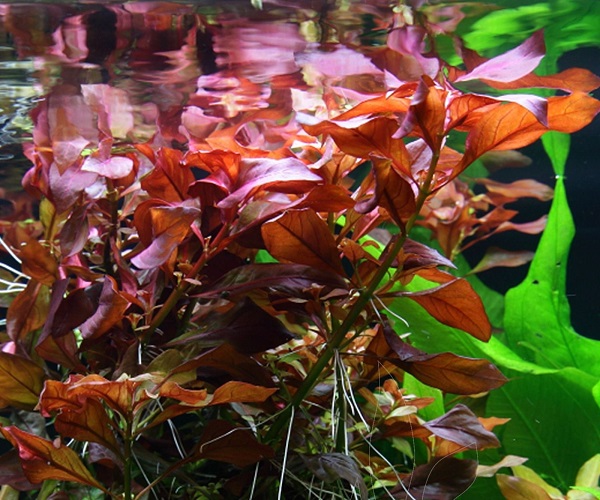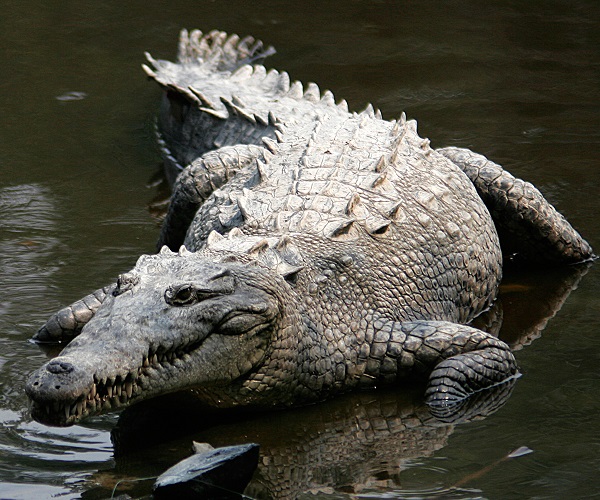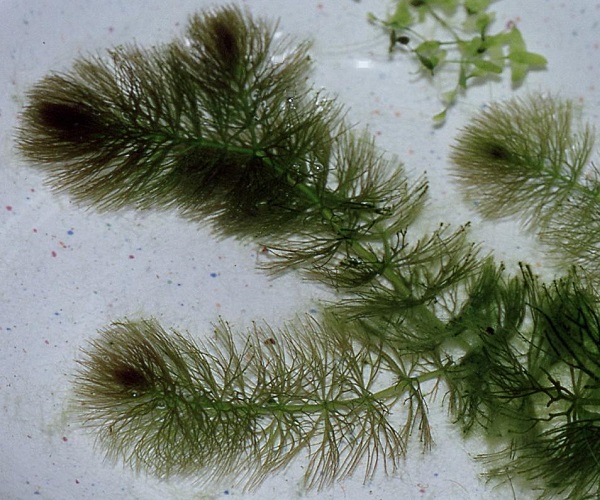Plants
Flora refers to the collective plant life found in a particular region, habitat, or ecosystem. It encompasses all types of plants, including trees, shrubs, herbs, grasses, ferns, mosses, and algae. Flora plays a crucial role in ecosystems by providing oxygen, food, shelter, and habitat for various organisms, as well as contributing to soil health, regulating the climate, and supporting biodiversity. Studying flora is important for understanding the ecology, conservation, and management of natural environments. (MK Filler)
Ludwigia
Also found in the Alligator Hole is Ludwigia repens. This is found within the mangrove. It is a red-leaved perennial herb that can live on land as well as in water.
Potamogeton
This plant can be seen below the water surface in the river. It is a light-green, leafy waterweed and unlike Ceratophyllum its roots anchors it to the river bottom.
Giant Swamp Fern (Acrostichum aureum)
This plant is often found in mangroves swamps. It is a true fern. The leaves, which may grow to 2m (7ft.) long, are coated which golden-brown spores on the underside.
Water Weeds
Along with river are a number aquatic vegetation submerged and floating. The waterweed found in the river is Ceratophyllum. It is a fast growing plant which provides food to aquatic animals. Floating maps used to provide a place for waterbirds to feed and rest. The plant has not roots so it is often swept downriver by wind and currents. Crocodiles may hide and rest on the mats of vegetation for camouflage and warmth. Fish use the plant for food, shelter and nesting. Shrimp and other invertebrates also feed and live on the Ceratophyllum. The biggest feeder of the plant was the manatee.
Red Mangrove (Rhizophora mangle)
Red Mangrove trees may grow 20m (65ft.) high in the shallow brackish water or saltwater along Jamaica’s coastal shores and rivers. The Red Mangrove can be distinguished by the thicket of prop roots which surround them. Aerial roots hang down from the lower branches. The prop roots and rootets of many mangrove trees create a screen of living wood which accumulates silt and debris from the water and prevents this material from washing away. In this way, wetlands and seashores are protected. Many commercial species of fish, shrimp, crabs and shellfish make use of mangrove roots for food and shelter.
Phragmites
Along the banks of the Alligator Hole River Phragmites australis (reed) grows more than 3.6m (12ft.) high. This abundant grass is found along shores, rivers and wetlands all over the world. The stems are used in craft work.



